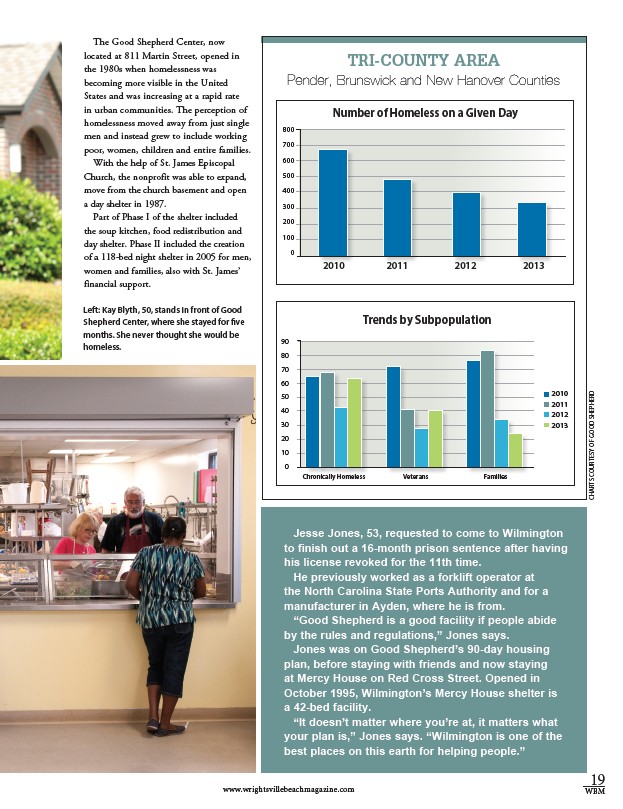
Charts courtesy of Good Shepherd
19
The Good Shepherd Center, now
located at 811 Martin Street, opened in
the 1980s when homelessness was
becoming more visible in the United
States and was increasing at a rapid rate
in urban communities. The perception of
homelessness moved away from just single
men and instead grew to include working
poor, women, children and entire families.
With the help of St. James Episcopal
Church, the nonprofit was able to expand,
move from the church basement and open
a day shelter in 1987.
Part of Phase I of the shelter included
the soup kitchen, food redistribution and
day shelter. Phase II included the creation
of a 118-bed night shelter in 2005 for men,
women and families, also with St. James’
financial support.
Left: Kay Blyth, 50, stands in front of Good
Shepherd Center, where she stayed for five
months. She never thought she would be
homeless.
Tri-County Area
Pender, Brunswick and New Hanover Counties
Number of Homeless on a Given Day
2010 2011 2012 2013
800
700
600
500
400
300
200
100
0
Trends by Subpopulation
Chronically Homeless Veterans Families
90
80
70
60
50
40
30
20
10
0
2010
2011
2012
2013
Jesse Jones, 53, requested to come to Wilmington
to finish out a 16-month prison sentence after having
his license revoked for the 11th time.
He previously worked as a forklift operator at
the North Carolina State Ports Authority and for a
manufacturer in Ayden, where he is from.
“Good Shepherd is a good facility if people abide
by the rules and regulations,” Jones says.
Jones was on Good Shepherd’s 90-day housing
plan, before staying with friends and now staying
at Mercy House on Red Cross Street. Opened in
October 1995, Wilmington’s Mercy House shelter is
a 42-bed facility.
“It doesn’t matter where you’re at, it matters what
your plan is,” Jones says. “Wilmington is one of the
best places on this earth for helping people.”
www.wrightsvillebeachmagazine.com WBM